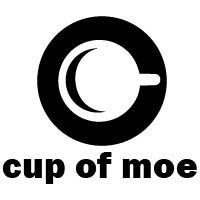We may earn money or products from the companies mentioned in this post.
As a kid, I recall the familiar smell of cracking open a library book. And one of my earliest memories is of sitting on the front stoop of my childhood home on a sweltering, July afternoon in North Carolina, voraciously reading one of Alvin Schwartz’s Scary Stories to Tell in the Dark books. 2019 André Øvredal-directed “Scary Stories to Tell in the Dark” ushers select entries of the series onto the big screen faithfully, enjoyably, though with a few faults.
It’s Halloween night in 1968, and horror aficionado Stella Nicholls (Zoe Colletti), along with her pals August “Auggie” Hilderbrandt (Gabriel Rush) and Charlie “Chuck” Steinberg (Austin Zajur) play a prank on town bully Tommy Milner (Austin Abrams). Milner and his cronies give chase, but drifter Ramón Morales (Michael Garza) offers refuge in his car at a drive-in movie. Zoe, Auggie, and Chuck in return bring Ramón to the derelict Bellows Mansion. Local legend holds that it’s haunted. The quartet discovers a hidden room in the mansion with a book of scary stories belonging to Sarah Bellows. Budding writer that she is, Stella takes the book from the mansion.
Upon cracking Sarah Bellows’s book open, Stella uncovers a recently-written story, “Harold.” The main character, Tommy, as the story reveals is stalked by a scarecrow, then transformed into one himself. Strangely, the next day Tommy Milner is reported missing. Stella, with Ramón in tow, visits the Milner farm where she suspects Tommy may have morphed into a scarecrow. The following evening, Stella discovers another story, “The Big Toe,” about a character that’s clearly Auggie. Rushing over to Auggie’s house, Stella and Chuck arrive on scene to find no sign of their friend. Convinced that the Sarah Bellows book of scary stories is creating new stories which, once written, become real, Stella, Chuck, and Ramón scramble to stop the stories from being written, which means learning about Sarah Bellows and her past.
“Scary Stories to Tell in the Dark” masterfully captures the dark nature of the original anecdotes. The children’s horror anthologies features heavy themes and genuine violence aimed. Like its literary predecessor, the 2019 film doesn’t sugarcoat. Outside of the stories themselves, characters are tormented in a Stephen King-esque manner. As such, “Scary Stories to Tell in the Dark” is tinged with elements of “It,” and the child protagonists doesn’t help to diminish any comparisons.
There’s a pleasant mix of more well-known fare, plus deep cuts, in the scary story selection. Many, including “Harold,” “The Red Spot,” and “The Pale Lady” were permanently ingrained in the memories of impressionable youngsters like myself, not only through words but the gruesome sketches of illustrator Stephen Gammell. However, “Scary Stories to Tell in the Dark” throws in a few lesser-known stories for dedicated fans, namely “Me Tie Dough-ty Walker.” It’s a nostalgic romp. While the of 2019’s “Scary Stories to Tell in the Dark” carries the feel of an anthology film, it comes without the downsides of anthology movies. Because the anecdotes integrate seamlessly into the overarching narrative, it’s far more cohesive than even the most solidified anthology film.
Effects are top-notch, possibly to compensate for toned-down gore. PG-13 horror films are continuously impressive to me, particularly since they largely rely upon ambiance rather than excessive blood. Tommy’s transformation into Harold switches to a first-person view replete with sprouting hay. “The Pale Lady” opts for an ominously red, creepily abandoned hospital, and phenomenal creature design. Similarly, the Jangly Man in “Me Tie Dough-ty Walker” is beautifully-rendered. An oft-overlooked component of cinema, sound design shines. During the scarecrow transformation, the sound of hay bristling seems all-encompassing. Footsteps sneak up from behind, a door slams front right; audio engineering coupled with onscreen visuals paints an eerie, engrossing portrait.
Unfortunately, “Scary Stories to Tell in the Dark,” for all of its technical mastery and nostalgic joy, isn’t devoid of tropes. Notably, the movie relies a bit too much on jump scares, a la “The Conjuring” camp of film making. Similarly, the ending completely sets up a sequel and, while it’s not quite as brash as “Mac and Me,” it’s rather heavy-handed in the suggestion of a follow-up. A few moments, particularly once action gets underway with the stories themselves, there are a couple of lulls while waiting for the next story. Plus, the setting and child protagonists can’t help but recall everything from “Stand By Me” to “It,” and even “Stranger Things.”
Though execution might not be the most original, “Scary Stories to Tell in the Dark” is a wholly enjoyable, nostalgic trip. Moreover, as with the memorable books of the same name, it’s a delightful foray into the horror genre suitable for teens and adults alike.
This post may contain affiliate links. We are a participant in affiliate programs such as the Amazon Services LLC Associates Program, an affiliate advertising program designed to provide a means for us to earn fees by linking to Amazon.com and affiliated sites. However, all products are thoroughly tested and reviews are honest and unbiased.

